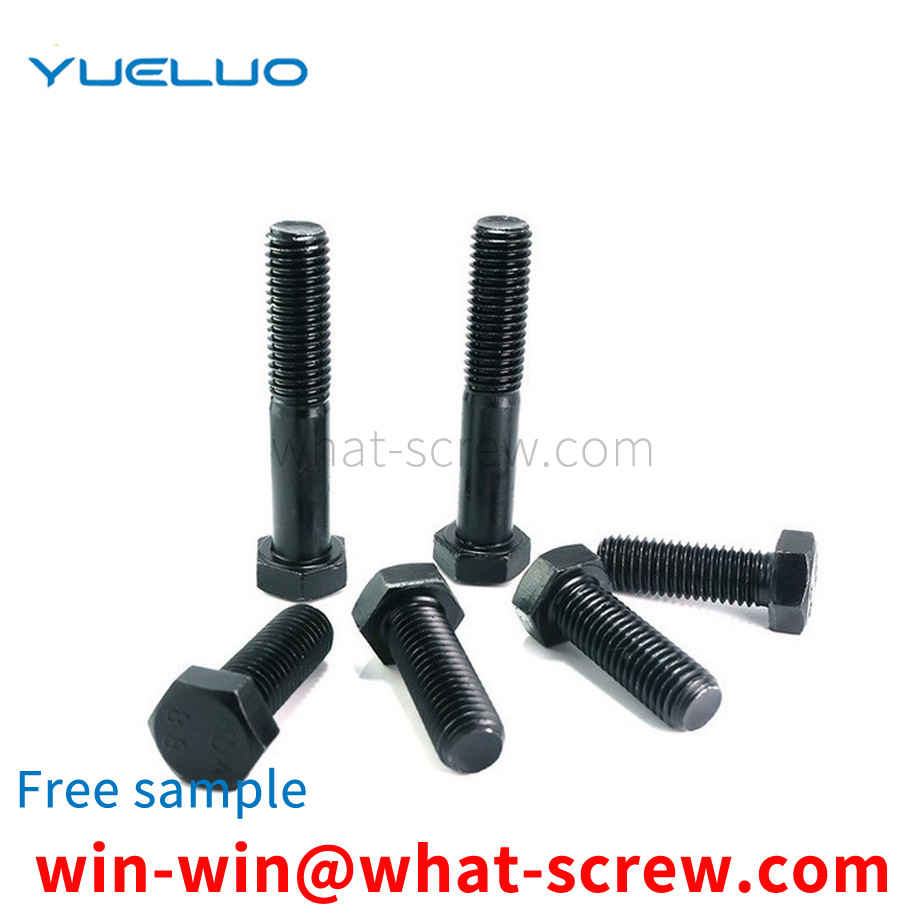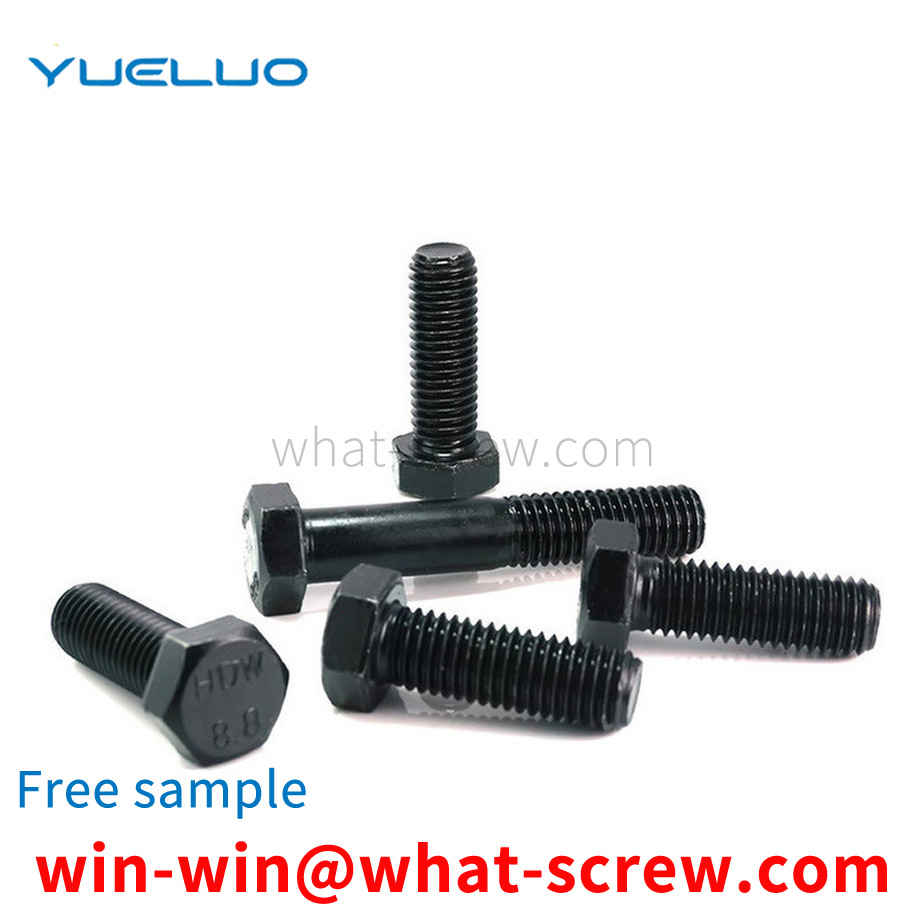According to the development and evolution process of self-tapping screws, we believe that the main types of self-tapping screws are as follows: 1. Common self-tapping screw threads are self-tapping threads, also known as wide thread. The surface is mostly electroplated. 2. Self-cutting and self-tapping screws are called scraping ends of self-tapping screws in my country's standard. The threads are self-tapping threads or machine threads, and the cross grooves are also H type. There are several types of self-cutting self-tapping screws: cross recessed pan head self-cutting self-tapping screws, cross recessed countersunk head self-cutting self-tapping screws. Cross recessed countersunk head self-cutting self-tapping screws, hexagon head self-cutting self-tapping screws. 3. Self-extrusion and self-tapping screws (self-tapping locking screws) The threads of self-extrusion and self-tapping screws are generally machine threads, and self-tapping threads are rarely used. In the wrenching method, in order to ensure the use of high-speed automatic assembly wrenches, slotting is generally not recommended. The cross section of the screw of the self-extrusion self-tapping screw is triangular. So it is also called triangular thread screw. 4. Self-drilling and self-tapping screws (self-drilling screws) The threads of self-drilling and self-tapping screws are self-tapping threads according to Chinese, German and international standards. In the American ASME and SAE standards, the BSD self-drilling self-tapping screws are self-tapping threads, and the CSD self-drilling self-tapping screws are machine threads. Self-drilling self-tapping screws are not recommended for slotted and normal hex head. 5. Metal driving screws (metal tapping screws) The metal driving screws have multiple threads and special threads with a certain helix angle. Only the American standard has metal drive screws, and there are no Chinese and German standards. 6. Wallboard self-tapping screws (dry wall screws) Wallboard white tapping screws are special threads with horn head, cross groove (H type) and 60° profile angle, and the surface is mostly phosphate treatment (phosphating). 7. The cross groove of the fiberboard nail is Z-shaped, and the surface treatment is mostly electroplating. There are several types of fiberboard nails: countersunk head, double countersunk head fiberboard nails, pan head, pan head flange (with pad) fiberboard nails, semi-countersunk head, semi-countersunk head flange (with cushion) fiberboard nails. 8. Combination self-tapping screws Ordinary self-tapping screws, self-cutting self-tapping screws, self-drilling self-tapping screws, etc., and flat washers, elastic washers (including spring washers, elastic locking washers, etc.). 9. Others Self-tapping screw types High and low thread double lead self-tapping screws, coarse and fine thread (different pitch) thread self-tapping screws, threads coated with sealing material (fall resistance) self-tapping screws, various composite groove self-tapping screws, Other special self-tapping screws, etc. In short, there are many types of self-tapping screws. With the development of production, the advancement of technology, new materials, new structures, and new thread forms, new self-tapping screw products will continue to appear.
The material of the combination screw is divided into iron and stainless steel. The iron ones are made of different iron screw wires. Generally, the wire of the combination screw is 1010, 1018, 10B21 and so on. 10B21 is used to make 8.8 grade combination screws. Like 8.8 grade hexagon socket head combination screws, 10B21 wire is often used. When done, go to heat treatment. After heat treatment, remove hydrogen and electroplating. This is to prevent the spring washer of the socket head cap screw from breaking. Stainless steel combination screws, in the combination screw market, generally refer to stainless steel SUS304 combination screws. 201 combination screws generally do very little. Few combination screw manufacturers produce 201 combination screws. Because the hardness of the screw wire of stainless steel 201 is not well controlled, it is easy to produce cracks.
The most important link in the development and design of fasteners is quality control. There are several major points from the feed to the finished product shipment, and these major points have different inspection methods. First of all, the feed is related to appearance, size, elements, performance, detection of harmful substances, etc.; the process is more about appearance, size, percussion test, forging flow line; heat treatment is more about appearance, hardness, torque, tension , metallography, etc.; the surface treatment is more about some hydrogen embrittlement tests, coatings, salt spray, etc., including a detection of harmful substances in shipments. In size and appearance inspection, the common ones are quadratic element, contour measuring instrument, three-coordinate measuring instrument, image sorting machine (this is a full selection machine); in mechanical and chemical inspection, there are mainly hardness machines (Rockwell and Vickers). ), tensile machine, metallographic microscope; in material testing, there is a spectrum analyzer and a salt spray testing machine.
In the field of mechanical design, there are a large number of connector connection structures that need to be fastened and positioned. As shown in Figure 1, the more common positioning and fastening connection methods at present are that pins 5 and fasteners are used for positioning and fastening, respectively. That is, cylindrical pins or taper pins are used for positioning, and fasteners such as screws or double-ended studs are used for fastening.
The anti-theft screw of this structure has two disadvantages. One is that the polygonal block moves up and down in the polygonal hole, and the polygonal hole in the connecting piece and the polygonal hole on the threaded part have no limit structure. Because of the polygonal structure, the two If the polygonal holes of the parts cannot be aligned, dislocation occurs, and any edge may block the up and down movement of the polygonal block, which is very unsmooth during use. The second is that the shell of the lock cylinder and the hexagonal part are connected by pins, and the pins are exposed on the hexagonal parts, which are easily damaged and leave opportunities for theft; once the pin is pried off, the lock cylinder will be taken out, and the entire anti-theft screw will be lost. and the pin fixation is sometimes unstable, which is detrimental to theft.
We have many years of experience in the production and sales of screws, nuts, flat washers, etc. The main products are: processing factory screws, steel structure screws, disc spring lock washers, iron screws and other products, we can provide you with suitable fasteners for you solution.



















 Service Hotline
Service Hotline




